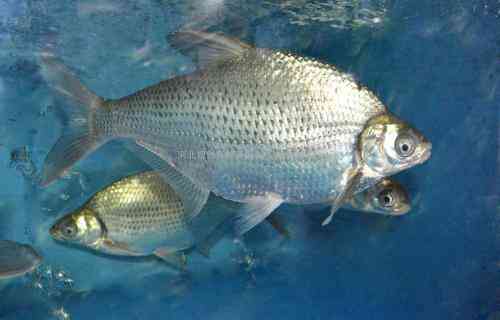Bream can grow in still water or flowing water, and generally swims and feeds in the middle and lower layers. In China, it is distributed in the plains from Heilongjiang to the Pearl River and Hainan Province, but not in the Tumen River, Yalu River, and above the Longmen of the Yellow River. Juveniles mostly live in shallow lakes or slow-flowing river bays. Juveniles mainly feed on algae, zooplankton, larvae of aquatic insects, and a small amount of aquatic plant fragments; adult fish generally feed on algae and zooplankton in winter and early spring. It grows slowly, and can reach a maximum of more than 2 kilograms. It has delicious meat and rich fat, and is one of China's important economic fish.

The bream is a herbivorous fish, and its main food is aquatic plants, diatoms, filamentous algae, etc. It also eats a small amount of plankton and aquatic insects. The feeding intensity varies with the season. Adult fish generally feed on algae and zooplankton in winter and early spring, and feed on aquatic higher plants, plant seeds, and residues of lake bottom plants from April to August, followed by algae and invertebrates. It rarely feeds in winter, and its feeding amount increases from March in spring, with the highest intensity in summer. The age of sexual maturity varies from region to region, 2 years old in the Yangtze River Basin and 3-4 years old in the north. The number of eggs carried by 2-year-old fish is 28,000-90,000, and that of 4-year-old fish is 94,000-260,000. Mature broodstock breed in places with a certain amount of flowing water from May to August, with the peak period from the end of June to the beginning of July. In winter, they gather in deep waters of rivers or lakes to hibernate. The growth rate is relatively slow and steady. The largest individual can reach 2 kilograms.
Widely distributed in rivers and lakes of major water systems across the country, with large production, it is one of the main fishing targets in natural water bodies. The meat is delicious, tender and high in fat, and the fat content of internal organs is even higher. It is best steamed for consumption, so it is deeply loved by people. Every 100 grams of edible part contains 21.0 mg of protein, 6.9-8.0 g of fat, 92 kcal of calories, 120 mg of calcium, 165 mg of phosphorus, and 1.1 mg of iron. Bream in Xiangyang, Hubei Province was famous as early as the Southern and Northern Dynasties. According to legend, Zhang Jinger, the governor of Xiangyang at that time, specially made a "land boat" to carry 1,600 breams to the capital Jianye as tribute in order to please Emperor Gao of Qi. For this reason, Emperor Gao of Qi conferred the title of "Chatou Governor" on Zhang Jinger after the local name of bream, "Chatou Bream". "Hubei Tongzhi" records: "Bream, that is, bream, is produced everywhere. The best ones are produced in Fankou, Wuchang, and Lumen, Xiangyang." Bream is a delicacy all year round, so there is a saying in folk customs that "spring catfish, summer carp, and four seasons bream".